Share As A Gift
Share a paywall-free link to this article.
This feature is only available for subscribers.
Start your subscription for as low as $4.95. Already a subscriber?
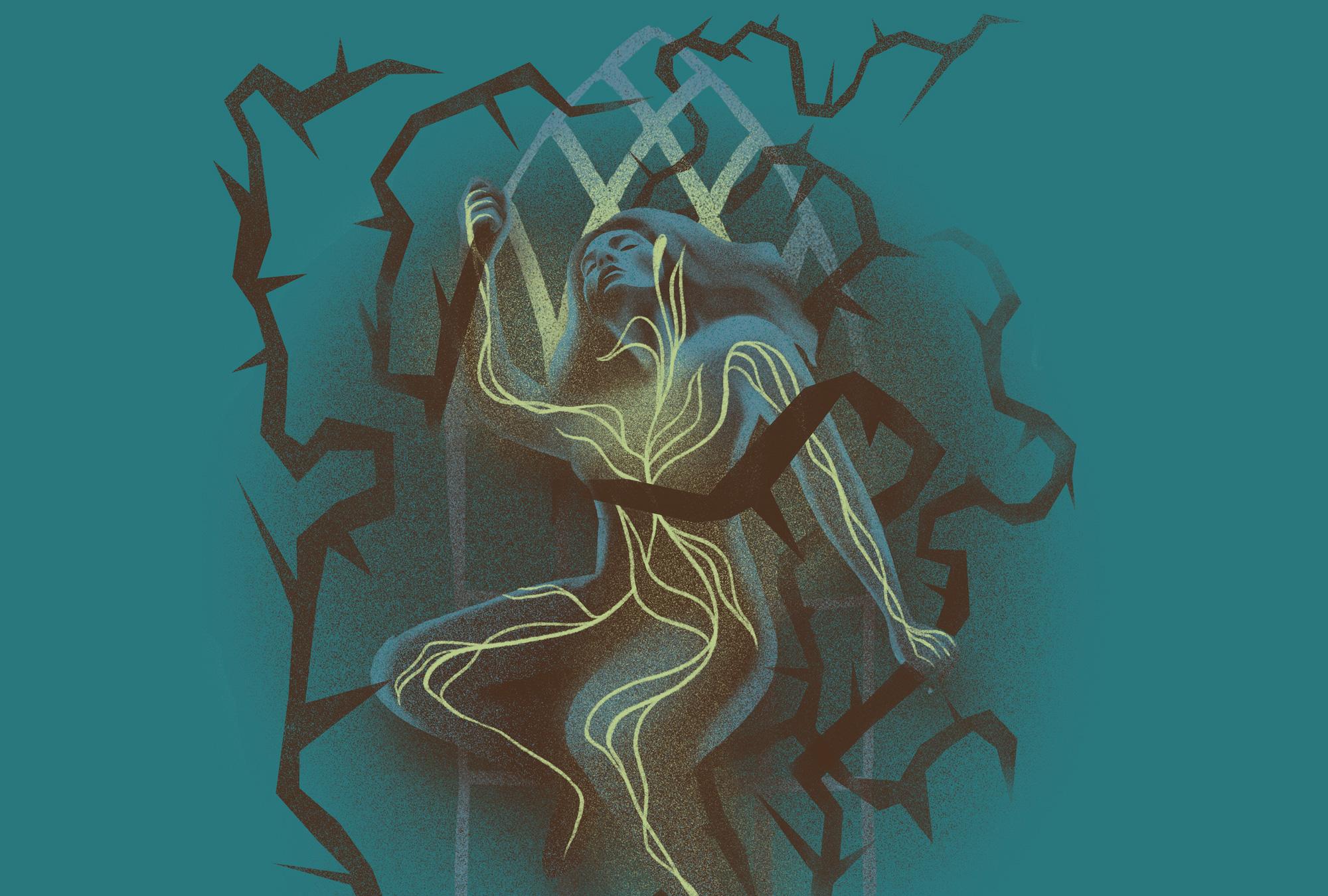
Illustration by Ryan McQuade
THE FIRST TIME I became conscious that I was carrying the effects of religious trauma, I had just moved to Seattle and was sitting in a church, sweating.
My heart was beating fast; I couldn’t understand what was happening. This church, one I had chosen expressly because of its progressive, LGBTQ+ affirming stance, was supposed to be safe for someone like me, a queer person who deeply valued my faith. But I didn’t feel safe. I looked at the faces in the room with suspicion, searching for any indication of a bait-and-switch, and left the building quickly once the service was over.
Despite what I knew about the church — they welcomed LGBTQ+ people at any level of leadership, were committed to anti-racism work, and weren’t afraid of doubt or theological exploration — my body told me another story. As I sat in the cold folding chair, I tried to reason with myself, repeating these facts to calm down. But I didn’t feel calmer; I felt worse. I sat on my hands, legs shaking, as I waited for the service to end.
Because I had moved to Seattle to work on a master’s degree in counseling psychology from an institution that specialized in trauma, I soon learned what had happened: In that moment, my body had experienced the effects of trauma. Even though I cognitively knew the church was supposed to be safe, my body couldn’t discern this church from all the churches I had been in before — churches filled with people who weren’t afraid to tell me I needed to become straight for God to save me from hell. My body was sending warning signs: Be careful, environments like this aren’t safe. Despite the years of work I had done to detach myself from the rigid belief system of my youth, despite the ways I had fought to find a more life-giving approach to theology, I was beginning to reckon with the reality that changing my beliefs didn’t mean I had healed from the environments in which I was raised.
Now, years later, I see more people waking up to the realities of lingering religious trauma. When I scroll through my streaming apps, I see documentaries such as Shiny Happy People, Pray Away, and Hillsong: A Megachurch Exposed that detail different forms of religious harm. I think this growing awareness of religious trauma is part of the driving force behind “deconstruction,” a buzzword that describes the process of reevaluating, changing, and sometimes abandoning one’s beliefs. But what I don’t see as often on Netflix — or on podcasts or on social media or at church — is honest talk about the process of healing. And as someone who now works as a therapist helping survivors of religious harm find healing, I know there is a lot more to say.
RESEARCHERS AT THE Religious Trauma Institute use the phrase “adverse religious experiences” to describe “any experience of a religious belief, practice, or structure that undermines an individual’s sense of safety or autonomy and/or negatively impacts their physical, social, emotional, relational, or psychological well-being.” Often, folks come to therapy after trying to overcome these negative experiences alone, usually in the same way I had — by changing their beliefs and assuming that would be enough to provide healing. Others leave their faith altogether. However, after finding a more congruent belief system, many people begin to bump into the same reality I had: While changing beliefs is a natural starting point, it doesn’t necessarily equate to healing.
I relayed parts of my story to Laura Anderson, a Nashville-based psychotherapist, co-founder of the Religious Trauma Institute, and author of the new book, When Religion Hurts You: Healing from Religious Trauma and the Impact of High-Control Religion. Many people fail to recognize “how beliefs live in our bodies,” she told me. “If we don’t hit that piece, we are going to maybe change our cognitive beliefs, but our bodies are probably still going to be pretty fundamentalist, pretty triggered, and pretty hypervigilant.” In other words, what I experienced years ago in Seattle on that church folding chair.
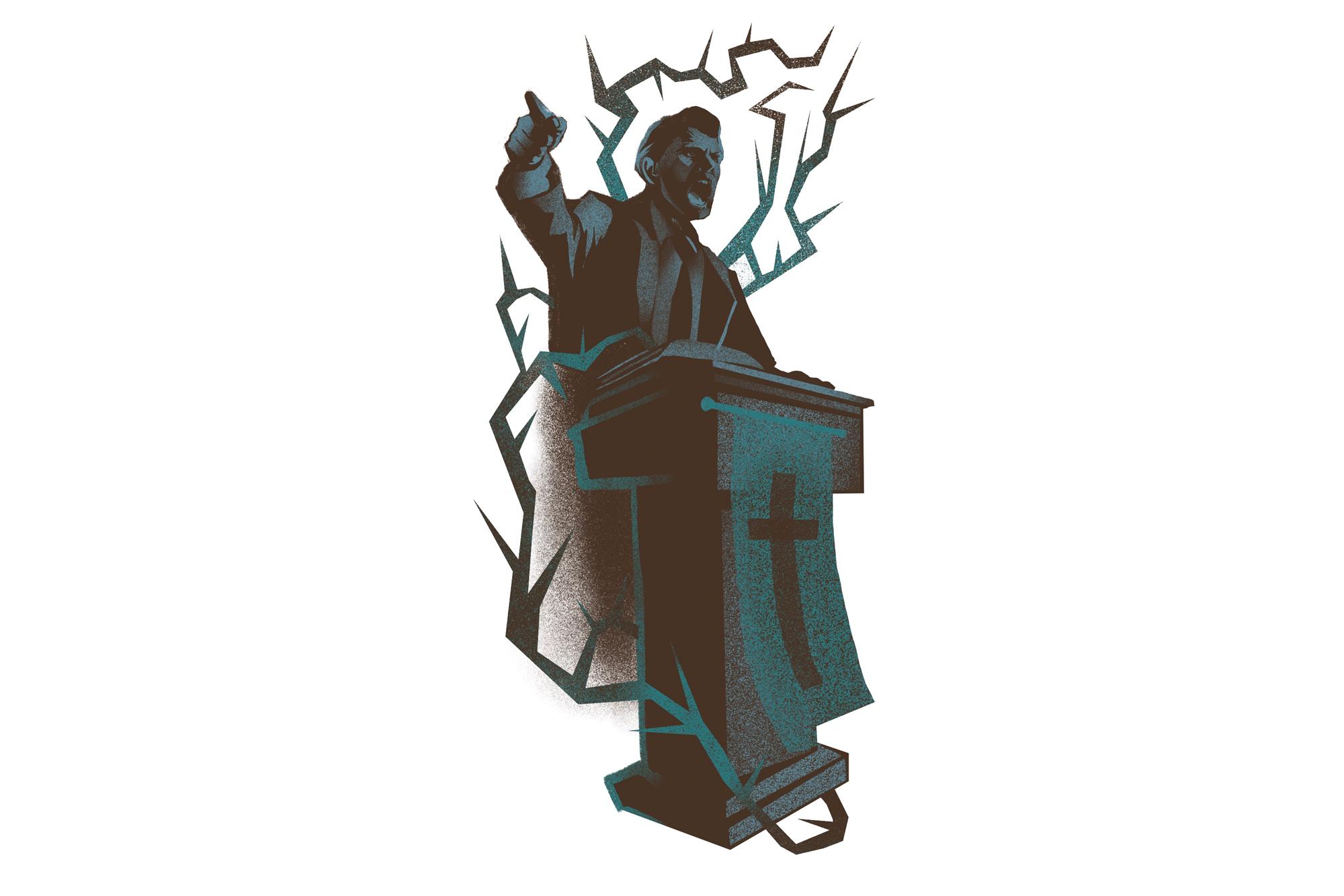
Illustration by Ryan McQuade
Anderson is careful to make the distinction that just because someone has had an adverse religious experience, or even has been in a spiritually abusive environment, it doesn’t necessarily mean they have religious trauma: “Trauma is subjective. What is traumatic for you may or may not be for me. And vice versa.” She continued, “Trauma is not the thing that happens to us, but it’s our nervous system’s response to the thing that happens to us. It lives in the body, regardless of where it stems from. We can’t think it away.”
That’s where people get stuck, as I did on my own healing journey. While I had done a massive amount of work reconsidering my beliefs, my new beliefs didn’t align with what my body was experiencing. It’s an alarming feeling. And while we’re trying to figure out what’s happening to us, it’s easy for voices of shame to jump in, making us think there’s something wrong because we can’t just move on.
ABBY WONG-HEFFTER, a Seattle-based therapist who specializes in religious trauma, cautions against using the concept of deconstruction in tandem with recovering from religious trauma. Instead, she prefers to think of it as “losing your programming.” It’s a subtle but important difference: While deconstruction refers to changing your beliefs, “deprogramming” conveys something deeper: the process of relearning how to exist in the world. Spirituality and faith are “important to a person’s sense of who they are in the world,” she told me. When you’ve found equilibrium within spiritually harmful communities, to recover you must figure out a new way of being, a long process that she describes as “a wild sense of reorientation.”
I resonate with Wong-Heffter’s understanding. Healing, for me, has felt like relearning how to exist and has required reconnecting with my body: Part of the religious trauma I experienced resulted in believing that my body and all the desires I felt were sinful. Though I did not realize it at the time, I learned to cope by disconnecting from my emotions and only allowing desire to be expressed in secret. Thus, healing has involved not just changing my beliefs (Bodies are good! Desire can be holy!) but also learning, in some ways for the first time, the signals my body sends me. It’s required me to discover how to grieve, be angry, and feel my way through emotional terrain that has felt murky at best. I’ve had to reckon with the fact that the fundamentalist Christian world I grew up in is not how the world actually works ... and then learn to live into that new-to-me reality.
This relearning how to exist is one of the difficult parts of working with religious trauma (and all trauma, for that matter). Because trauma happens within the particularity of individual experience, there is no three-step program to healing; it requires nuance. Every trauma expert I’ve talked with emphasized this. Anderson put it this way: “More often than not ... we’re looking at having to reintegrate every single day back into the world. And that may be for the rest of our lives.”
WHILE THERE ISN'T a well-defined road map, there are steps we can take when pursuing healing from trauma. Chanequa Walker-Barnes, an Atlanta-based clinical psychologist and womanist theologian, wrote her new book, Sacred Self-Care: Daily Practices for Nurturing Our Whole Selves, to help people find tools for healing. She told me the path to healing starts with patience and grace: “We often want healing to be instantaneous, we want it to happen quickly, and we often want it to happen the way it looked like for someone else.”
Walker-Barnes cautions against comparing our own healing to the journey of those around us: “I used to give myself such guilt any time I experienced anxiety or other effects of trauma,” she said. “I would feel afraid but then think, ‘I shouldn’t be afraid, let me pretend to not be afraid.’ That was actually making the problem worse. Because then, in addition to anxiety, I was feeling guilt and shame about my anxiety.”
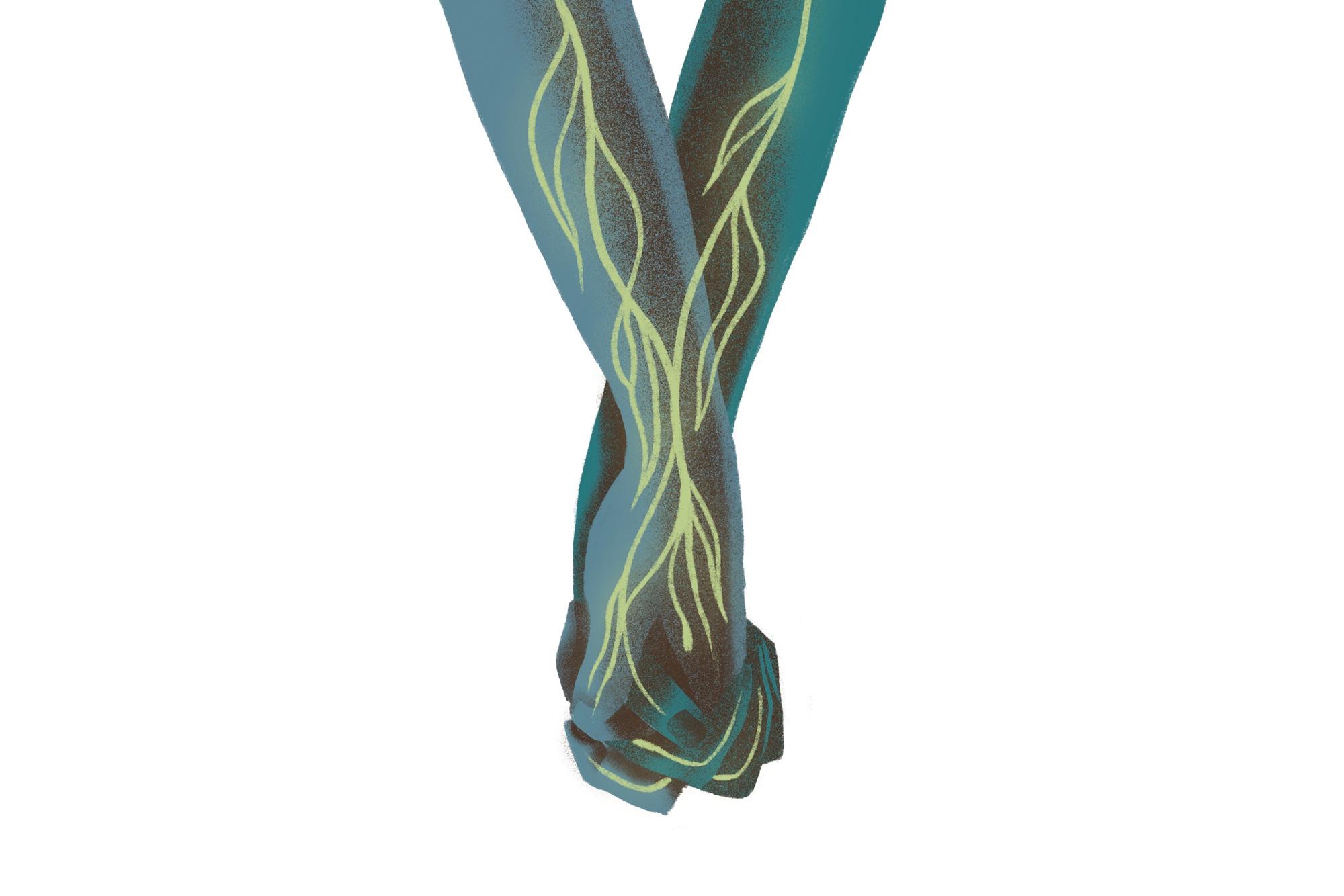
Illustration by Ryan McQuade
A solution Walker-Barnes has found “is to externalize the problem.” She imagines an anxious little girl inside of her and attempts to treat that part of her the way she would treat a frightened child. “When I see my anxious and scared parts of myself as a little girl, instead of blaming her for what she’s feeling, I can ask ‘What would I do with an anxious child?’ I can say, ‘Sweetie, what do you need?’ What does she need to feel cared for and loved and safe in the moment, instead of making her feel guilty?”
This process, formally known as “self-compassion,” is a key component in healing from religious trauma. In her book Self-Compassion: The Proven Power of Being Kind to Yourself, Kristin Neff defines it simply as learning to “treat ourselves with the same kindness, caring, and compassion we would show to a good friend, or even a stranger for that matter.” For people working through religious trauma, practicing self-compassion might mean finding a part of ourselves who can engage in kinder self-talk. That could sound like saying to ourselves, “It makes sense I feel this way; I’ve been hurt in places like this” when sweating and trembling in a church, instead of judging or shaming. For me, self-compassion was a game-changer; I learned to approach my experiences with more curiosity, which allowed me to accept where I was instead of trying to force myself to be further along in my process.
WE OFTEN HOLD rigid definitions of what “being healed” should look like. And that can lead us to feel stuck. Laura Anderson told me how she used to think about being healed: “I would look a certain way, I would sound a certain way, my life would be a certain way, and I would not be impacted by these things that happen again or happened in the past.” The problem? “If we keep that definition of healing, constantly working toward an elusive end goal, we’re going to be very discouraged,” she explained.
If our definition of healing is that it’s a destination we eventually arrive at, we’ll find it’s a moving goal post “getting further away in most cases,” said Anderson. “It might be great to have symptoms decrease, but if that’s our only measurement of healing, we will probably live in a lot of shame and discouragement for most of our lives. We’ll constantly be having to work and fix and change instead of being present and actually living our lives.”
Lee Start is a Minneapolis-based therapist who runs religious trauma therapy and support groups for queer, trans, and nonbinary people. Start emphasizes that learning to be present with our emotions as they are — as basic as this may feel — is a profound part of healing, especially when we explore “anger, fear, grief, and feelings that maybe were never okay for us to have,” finding instead that when people talk through the ways they experienced harm in religious communities, they realize they’re not alone.
Not being alone is another key component of recovering from religious trauma. “Your harm, your abuse, occurred within community,” said Wong-Heffter. “Because of that, I do not think that restoration can happen alone.” But she noted that new community doesn’t have to mean church, especially if you struggle to feel safe in those spaces: “Perhaps you find a trivia night you go to every week, or maybe a knitting group, or a soccer team. Finding a group of people who help you feel a sense of delight, a sense of welcome when you arrive, can be really restorative.”
While some people who’ve experienced religious trauma ultimately determine faith no longer has a place in their lives, others find new ways to reintegrate their spirituality within new communities. Start said there’s not a prescribed outcome for this work, but the process involves learning “how to explore spirituality in a way that feels safe.” For Walker-Barnes, this includes confronting some of the painful realities about our faith communities: “We have to wrestle with the fact that spiritual abuse isn’t just something that happens in certain bad communities by bad people. It’s much more systemic, it’s the air we all breathe. We have to disentangle that from the beauty that is in the Christian message.”
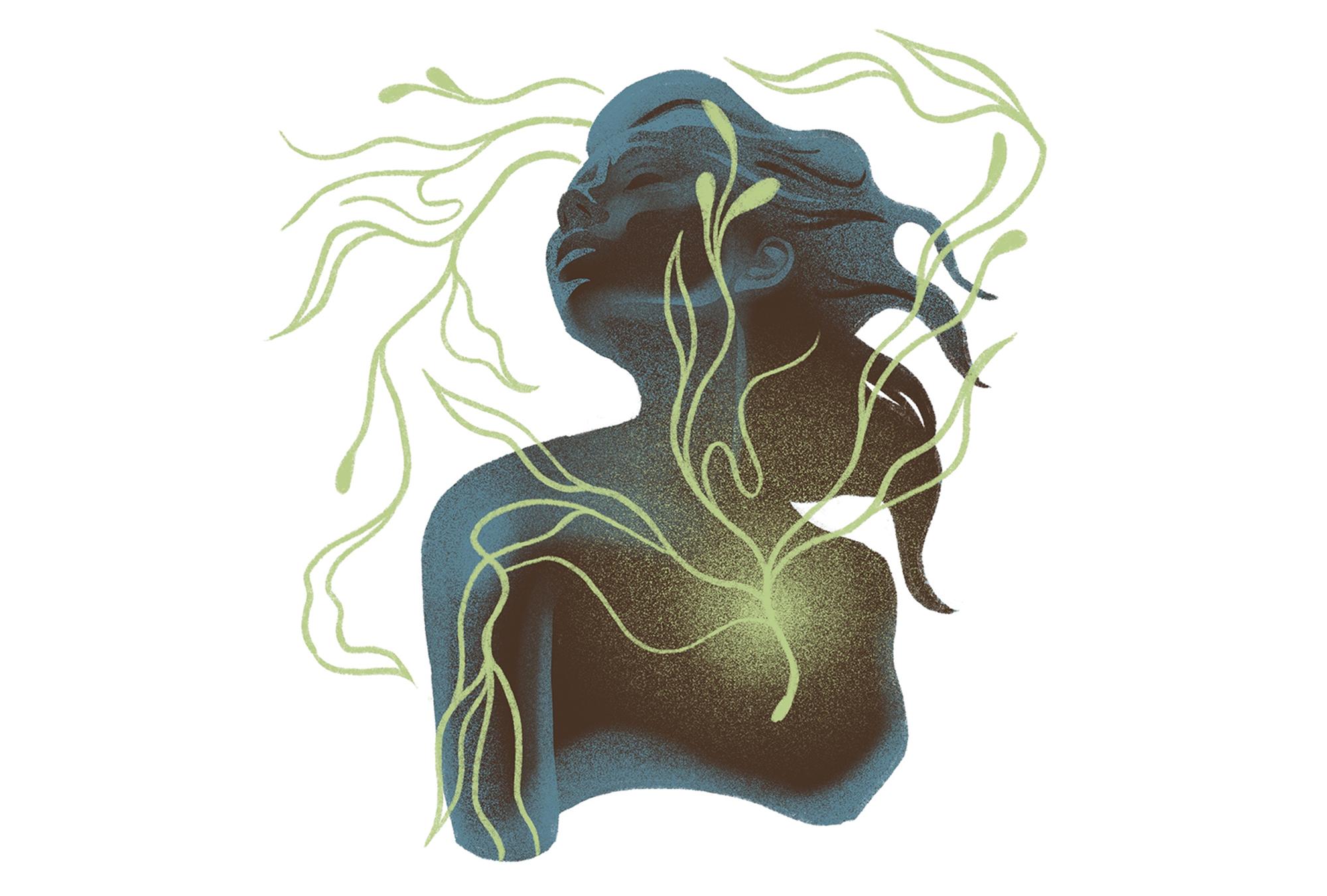
Illustration by Ryan McQuade
Engaging with people who are asking similar questions has helped me find healthier expressions of faith. Initially, I engaged with these questions through podcasts and books; however, once I started to talk with friends about what I was discovering, I found many of us were in the same boat. Sometimes, we stay up late discussing how we’re learning to re-understand faith; other times we try out new churches together and process our experiences. Doing this work in community with people who help me tune back into my own experience has been life-changing.
For Start, community-based work allows people to explore connection in new ways, working through questions such as, “How do I explore safety within relationships? Am I allowed to have boundaries in ways I’ve maybe never had before? Am I allowed to explore spirituality in ways that connect me more to myself?” Ultimately, Start has seen community-based work help people realize they “don’t have to be separated from themselves in order to be in community, believe something, or have spiritual experiences.”
In my own healing, this rings true. While I am grateful for my therapist, it’s only been in finding new community that I’ve been able to move on. Drinking wine with friends while watching whatever variation of The Bachelorette is on has been perhaps even more healing than deep conversations. For me, these moments are a marker of how my relationship with church and faith have changed: Growing up, I thought faith meant my entire life had to revolve around God, which meant spiritualizing everything and looking for Christian alternatives to “worldly” things, such as The Bachelorette. Now, I recognize that God didn’t create us to be puppets. When we feel the warmth of belonging and being in community — any community — I believe God is pleased. While I still have a difficult time walking into a church, I can now treat the part of myself that feels scared with more compassion, partly because my new community treats me with that same compassion. I had to get away from churches to get a different understanding of how communities can work.
“The power of relationships is essential in the healing process,” Anderson told me, relationships that help ground us in what is happening in the here and now, not in some amorphous imagination of what we will feel like when we are finally healed. This can happen in therapy, but it also happens within other relationships and within new communities. “We learn to feel pleasure, but it also means we feel pain.” Anderson said, “It doesn’t mean everything is going to get better, it just means we’re living through it. Healing is about being present and living in this life.”
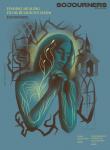
Got something to say about what you're reading? We value your feedback!